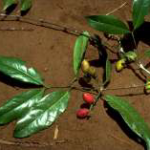Jengkol (Archidendron jiringa) is a tropical tree that grows up to 20 meters high in the rainforests of Southeast Asia. The seeds are mainly eaten in Indonesia, but also in Malaysia, Thailand, Cambodia, and Myanmar. These seeds are called stink bean or dog fruit in English, which outlines their smell.

Description and comments
Archidendron pauciflorum is closely related to Archidendron jiringa. They are often considered synonyms or variants of the same species, depending on the taxonomic source. However, some botanists differentiate between them based on morphology, geographical distribution, and local usage. Which further blurs the picture of which species is which one. Plants of the World Online, Kew, defines the distribution of Archidendron jiringa westward of and including Java. In contrast, Archidendron pauciflorum is distributed eastward of that line. As the Royal Botanical Gardens, Kew, have an undisputed academic reputation, I will go with their scientific distinctions, rather than with other sources. If a reader has a different opinion on this naming, please let me know in the comments section below.
Appearance of seeds
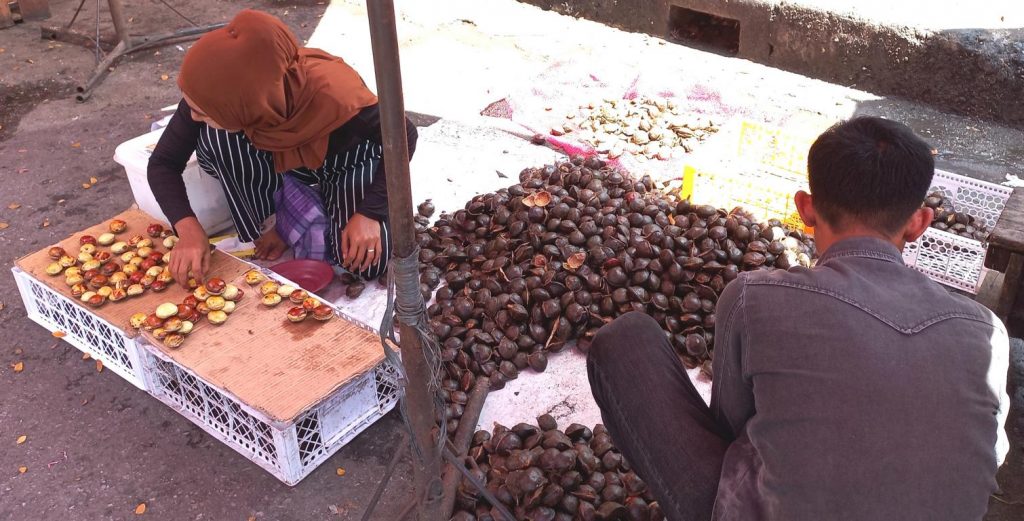
When I was buying Jengkol seeds at Pasar Raya Padang in West Sumatra, they were initially enclosed in a dark reddish-brown hard shell with a flattened lens shape.
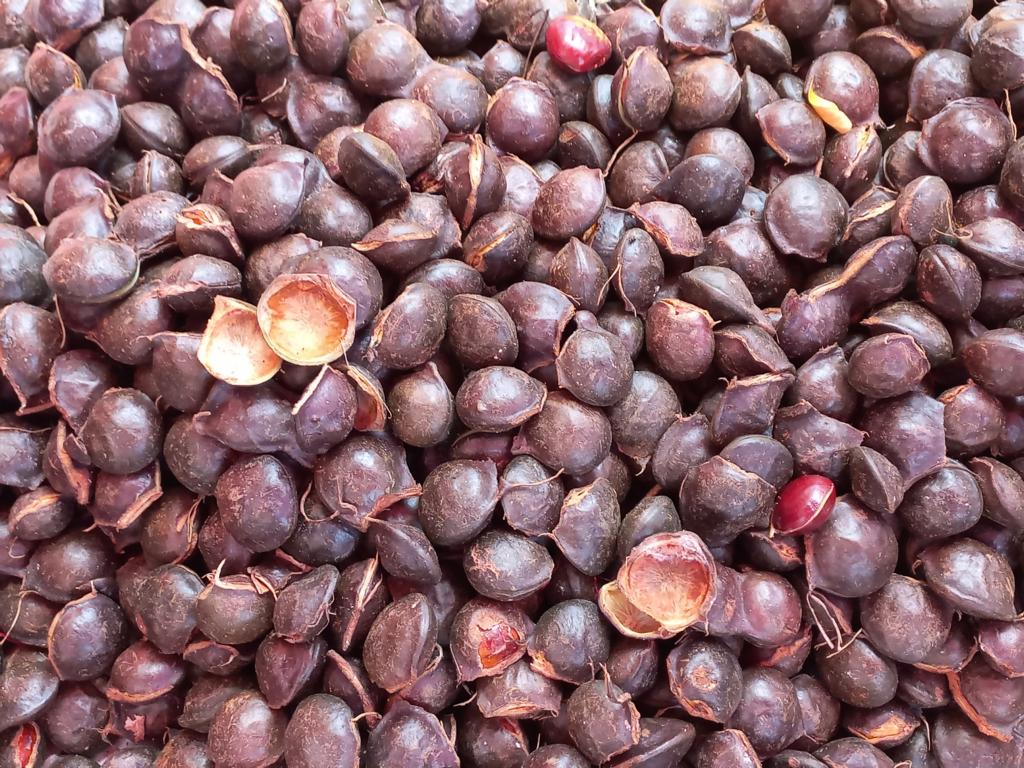
After de-shelling by the vendor, the seeds were yellow-colored with a brown, skinny seed coating.
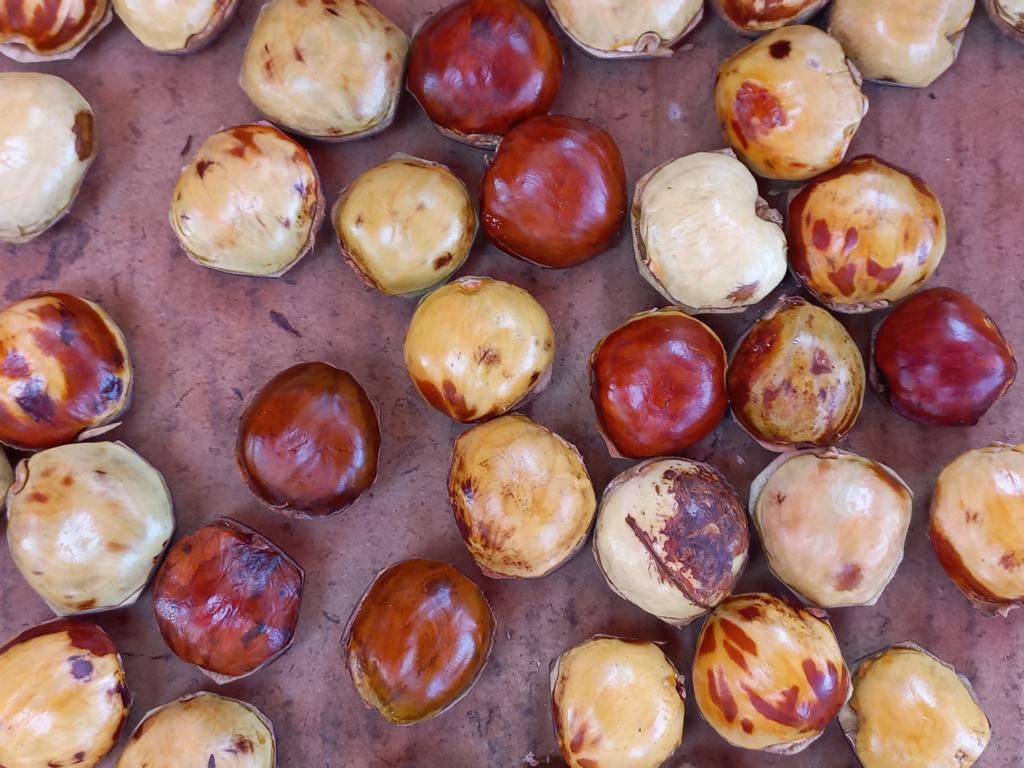
Preparation for human consumption
Cooked Jengkol seeds are a local specialty in Sumatra, which is known for two effects. Firstly, they have a strong odor due to sulfur-containing compounds, similar to durian or garlic. And secondly, they contain Djenkolic (also written Jengkolic) acid, which promotes kidney stones and gout.
Their odor does not attract many people. But if somebody is used to it, it acts like an acquired taste, and people crave it.
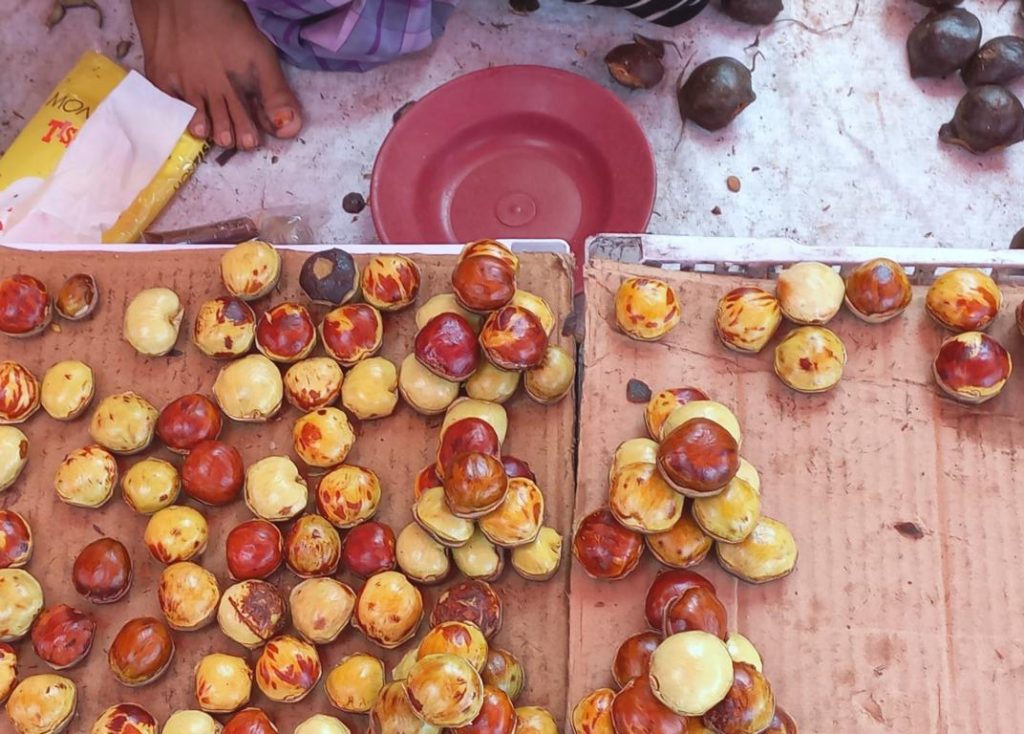
The amount of djenkolic acid in the seeds also depends on the age or ripeness of the seeds. Green ones are young and can be eaten raw. Hard-shelled brown ones are old and have to be cooked to become safely edible. These have to be either extensively boiled, soaked, fried, roasted, or fermented.
To further alleviate kidney problems, the following three rules should be obeyed when eating Jengkol seeds:
- Eating them in moderation.
- Drinking plenty of water after consumption.
- Combining with alkali-rich food, like vegetables, to balance acidity.
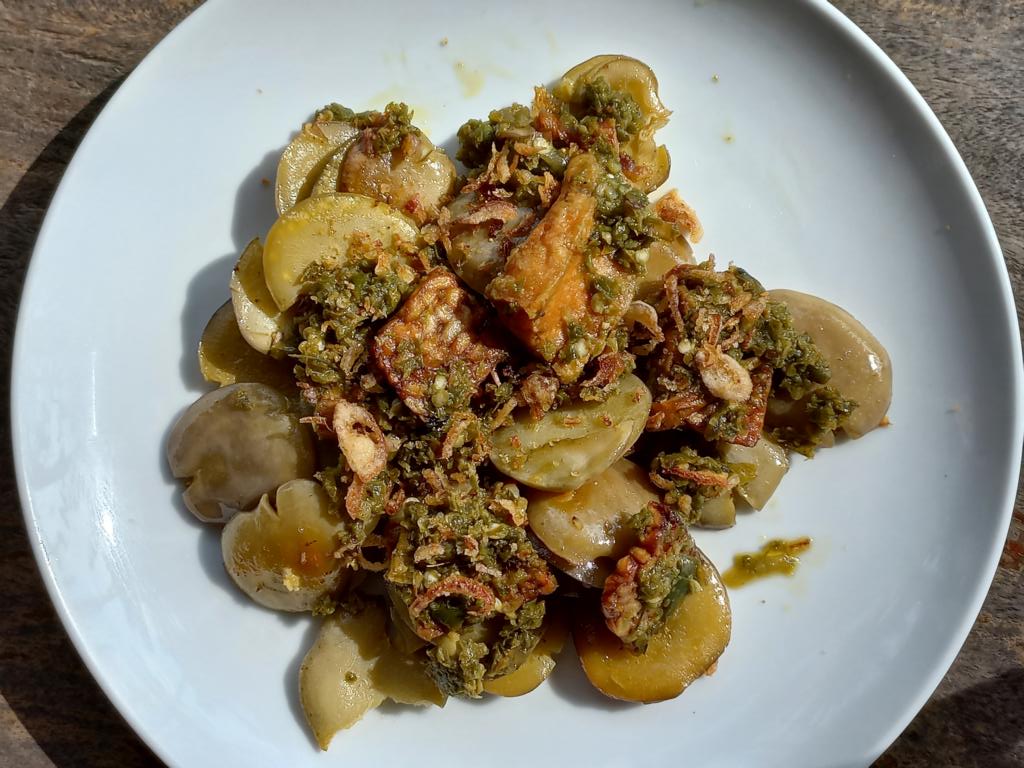
When I was eating Jengkol seeds, my hosts prepared them as a vegetable curry. There was still an interesting smell, and the texture was like cooked potatoes. The whole curry, with all the spices and vegetables, tasted very pleasant, and it was difficult for me to understand why the lady of the house did not want to eat it herself. From my personal view, I wholeheartedly recommend tasting these seeds.
Nutritional value
Jengkol seeds are rich in carbohydrates and proteins, high in minerals, and contain antioxidants. Depending on maturity and preparation, 100 grams contain the following amounts:

Lessons learned about Jengkol seeds:
- There is a mix-up of two scientific names for Jengkol seeds.
- These seeds have a strong odor and contain Djenkolic acid.
- This Djenkolic acid promotes kidney stones, gout, and related illnesses.
- Only small amounts of Jengkol seeds should be eaten.
- Plenty of water should be drunk after each portion, and it is best to eat them together with alkali-rich food.
.




